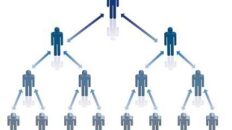By Hiran de Silva
For more than two decades, a falsehood has been repeated across boardrooms, sales presentations, and webinars:
“You can’t consolidate bottom-up with Excel.”
That single line has sold billions of dollars’ worth of “Excel replacement” subscriptions.
And yet, it’s demonstrably false.
Let’s unpack the evidence — and the opportunity.
1. The Claim Collapses Instantly
In July 2023, I built and demonstrated a comprehensive global budgeting model — in Excel — that consolidated data bottom-up across multiple business units and countries.
No third-party tools. No cloud subscriptions. No Power Query.
Just Excel, using its own Ace database engine, which has been built into Microsoft Office since the 1990s.
That model alone shatters the myth.
But that’s only the beginning.
2. “Only Hiran Knows How” — Really?
When confronted with proof, the usual fallback from the Excel replacement industry (let’s call it the ERI) is:
“Well, maybe you can do it, but nobody else can.”
That’s an admission, not a defence.
And even that excuse no longer holds water — because we now live in the age of AI.
Today, anyone can ask ChatGPT, Gemini, or Copilot:
“How do I consolidate bottom-up in Excel using a relational database?”
And in seconds, they’ll get a working solution.
The knowledge isn’t hidden anymore.
It’s accessible to everyone.
So the argument that “nobody knows how” collapses instantly.
3. “But It’s Too Difficult” — No, It’s Not
The next line of defence is usually:
“Even if it’s possible, ordinary Excel users couldn’t manage it.”
That’s nonsense.
The process involves copying and pasting a few lines of VBA code (which AI can generate), adjusting a path, and running it.
That’s no different from following a recipe where you double the ingredients for a larger dinner party.
If you can multiply a formula, you can multiply a recipe.
If you can adjust a formula, you can adjust a database connection string.
This isn’t advanced programming — it’s ordinary Excel use, extended to do what Excel was designed to do from the start.
4. “Our Customers Don’t Know” — And That’s Supposed to Be an Excuse?
I’ve heard it all before:
- A senior manager at a Workday Adaptive reseller admitted that their customers don’t know what I know — and seemed proud of it.
- A DataRails executive dismissed my demonstration, claiming users wouldn’t be able to manage it — even though it was simpler and more flexible than their own platform.
- An Anaplan representative (a so-called “thought leader”) accused me of “insulting his customers” simply for pointing out that his claim about Excel was false.
Ironically, the only insult to customers is the suggestion that they’re incapable of understanding how to use Excel properly. Or, indeed, AI.
5. This Isn’t New — It’s Forgotten History
Back in 1993, Microsoft was already demonstrating Excel integrated with enterprise databases like IBM’s AS/400.
Dave Cutler and Bill Gates described this as part of Microsoft’s Digital Nervous System — a vision of real-time data flow across organisations.
By the late 1990s, that same capability was bundled into Office itself — the Ace (Access Connectivity Engine).
This was the foundation for what I now call the Digital Librarian — Excel’s ability to read from and write to a central database, seamlessly, thus unifying entire data-driven business processes.
So when the ERI says, “Excel can’t do that,” what they really mean is,
“We forgot that Excel could already do that — thirty years ago. And still does!”
6. The Hidden Industry of Real Excel Professionals
While influencers and vendors sell their courses and subscriptions, there’s a quiet, professional undercurrent of Excel consultants — people who actually build enterprise-grade systems for clients.
They don’t appear on YouTube.
They don’t make memes.
They work under NDA, solving real problems for real businesses, often creating multi-million-pound efficiencies.
WIRED Magazine once called them Excel Warriors. And referred to me, Hiran de Silva, as a “consultant who builds six-figure spreadsheets.”
That’s the world I come from.
That’s where the real truth about Excel’s capability lives.
7. The Cost of the Lie
Let’s ask the real question.
Over the last 25 years, how many $ trillions in lost productivity, unnecessary subscriptions, and wasted implementation budgets have accumulated because this truth was hidden, ignored, or suppressed?
How many businesses have been led to believe they need a new system — when the system they already owned could do it better?
How many professionals have been told, “Excel isn’t enterprise-grade,” when in fact, Excel was the first enterprise-grade digital nervous system ever created?
8. The AI Factor Changes Everything
Before 2023, you could argue that the knowledge gap made adoption difficult.
Not anymore.
AI has erased that barrier.
Now, any Excel user — at any level — can ask an AI assistant:
- “Show me how to upload data from Excel to an Access or SQL table.”
- “Write a VBA routine that consolidates department workbooks into one centrally located data model.”
- “Explain what the Ace database engine does.”
And within seconds, they’ll have working instructions, examples, and code.
That means the “Excel revolution” is no longer a secret.
It’s imminent, relevant, and unstoppable.
9. The Unstoppable Opportunity
If you’re an Excel user — no matter what your level — this is your open goal.
The world has been told a false story.
And those who understand the truth can create extraordinary value.
Because value in business doesn’t come from tools — it comes from outcomes.
When you solve management-level problems with the tools they already have, you become indispensable.
That’s how consultants like me — and many others — have tripled our pay with Excel.
Not by learning more formulas, but by understanding Excel as a data system, not just a spreadsheet.
10. The Truth the Industry Can’t Deny
The claim that Excel cannot consolidate bottom-up is false.
The claim that only one person (Hiran) knows how is false.
The claim that ordinary users can’t do it is false.
Excel has been able to do it for 30 years.
AI now makes it easier than ever to learn.
And the opportunity to transform business productivity — and your own career — has never been greater.
“The miracle of Excel isn’t new.
It’s just been forgotten.Now, with AI as your guide,
Excel fights back.”






Add comment